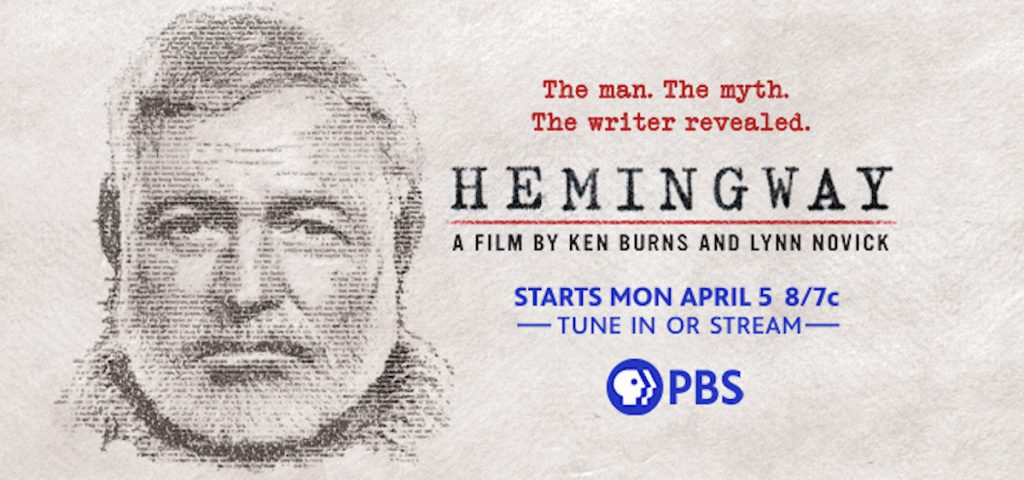Culture
A Life Far Beyond the Scale of ‘Normal’: Dr. Bob DeMott on Hemingway’s Legacy
By: Emily Votaw
Posted on:
Dr. Bob DeMott said that throughout his 40-plus years teaching at Ohio University, there wasn’t a year that went by that he didn’t teach something by legendary American novelist Ernest Hemingway.
“Hemingway’s work casts an enormous shadow, there’s no question about it,” said DeMott, the Ohio University Edwin and Ruth Kennedy Distinguished Professor Emeritus of English and John Steinbeck expert. “But even more than that, there is an enormous mythology around him, he was truly larger than life. He did all types of things that most people just never go about doing – going on safaris, getting into airplane accidents and surviving them. It was just a life that was way beyond the scale of what most people would consider ‘normal.’”
Hemingway’s life and legacy, as well as the enduring mythology that surrounds the iconic writer, is the subject of Ken Burns’ and Lynn Novick’s forthcoming three-part documentary series Hemingway. The first installment of the series premieres on WOUB-TV Tuesday, April 6 at 8 p.m., followed by the subsequent two-hour episodes airing 8 p.m. to 10 p.m. and again from 10 p.m. to midnight Wednesday, April 7 and Thursday, April 8.
Throughout his career, DeMott has attended and spoken at a number of Ernest Hemingway Society Conferences. One of those gatherings in the mid-90s took place in Ketchum, ID, featuring a tour of the Ernest and Mary Hemingway House, where the writer took his life early in the morning of July 2, 1961.
“It was quite stunning. I mean, it left me breathless because it’s a beautiful house perched up on a bluff overlooking the river – just a beautiful place,” said DeMott. “That was sort of the thing that got me. He must’ve been so depressed and so physically ill that even the beauty of that spot couldn’t save him. I just never got over that. It was chilling in a lot of ways.”
DeMott recalls that at that same conference, organizers arranged for several Ketchum and Sun Valley residents who had known Hemingway personally to speak to the conference attendees, one of those longtime friends of the writer being Leonard “Bud” Purdy.
“Bud Purdy was resolute in thinking that Hemingway hadn’t actually killed himself, that somehow it was an accident. Even though all evidence is to the contrary. It was very touching. He clearly really loved him and he was really trying to support his memory; trying to speak about him in the best possible way,” said DeMott. “I think Hemingway really had that kind of effect on people. He really drew them in. Hemingway was pretty quarrelsome, and he ended up losing friends; but for the time it was like a sort of magic circle because Hemingway was such a charismatic person – and just simply a wonderful writer.”
“(Hemingway) did all types of things that most people just never go about doing – going on safaris, getting into airplane accidents and surviving them. It was just a life that was way beyond the scale of what most people would consider ‘normal.’” – Dr. Bob DeMott
Hemingway flexed his infamously aggressive disposition when meeting Steinbeck in a New York City bar in the mid-1940s.
“Steinbeck was there with his friend novelist John O’Hara and Hemingway was kind of pugilistic – they had all been drinking, and Hemingway ended up breaking a walking cane Steinbeck had given to O’Hara over his knee,” said DeMott. “It was a bit of an aggressive confrontation – but really Steinbeck had great respect for Hemingway, as did most of the writers of their era. Steinbeck was actually quite pleased when Hemingway got the Nobel Prize for Literature, which Steinbeck got himself a number of years later.”
DeMott said that Hemingway’s writing was often used by critics as a “sort of standard bearer of a certain kind of modernist prose writing, as a sort of yardstick by which to judge other writers who didn’t always come up to that yardstick. A lot of writers felt like they were kind of living in the shadow of Hemingway, even after he died.”
Hemingway’s writing style is notoriously spare, influenced by the instruction he received as a young journalist while writing for the Kansas City Star newspaper, whose stylebook emphasized four key rules: “Use short sentences. Use short first paragraphs. Use vigorous English. Be positive, not negative.”
DeMott said Hemingway was one of many high modernist writers experimenting with literary styles throughout the early 20th century.
“He was really one of many people – Ezra Pound, T.S. Eliot, William Faulkner, Virginia Woolf, James Joyce – all these people were setting new directions in poetry, fiction novels, short stories, and Hemingway admired these people and wanted to be a part of that,” said DeMott. “Generally speaking, for Hemingway, it was a matter of trying to write a true sentence that would indicate much greater depths beneath the surface.”
This writing tactic is often referred to as “iceberg theory.”
“The idea was that what you saw was about one eighth of the experience and seven eighths of it were underwater and submerged. The trick was to get that one eighth to suggest the depth and weight and size of the other seven aspects of an experience,” said DeMott.
Although Hemingway’s literary works, mythological cultural status, and fascinating life all play into why he continues to be a subject of study some 60 years after his passing, DeMott said one particular aspect of Hemingway’s demeanor contributes to the endurance of his legacy: his staunch individuality.
“I think that as we go farther and farther along the route into kind of a herd mentality, artists like Hemingway and Steinbeck really stand out,” he said. “Like any great artist or musician or athlete — they make us really stop and rethink anything that is ho-hum or middle of the road, or plastic, as opposed to organic.”


